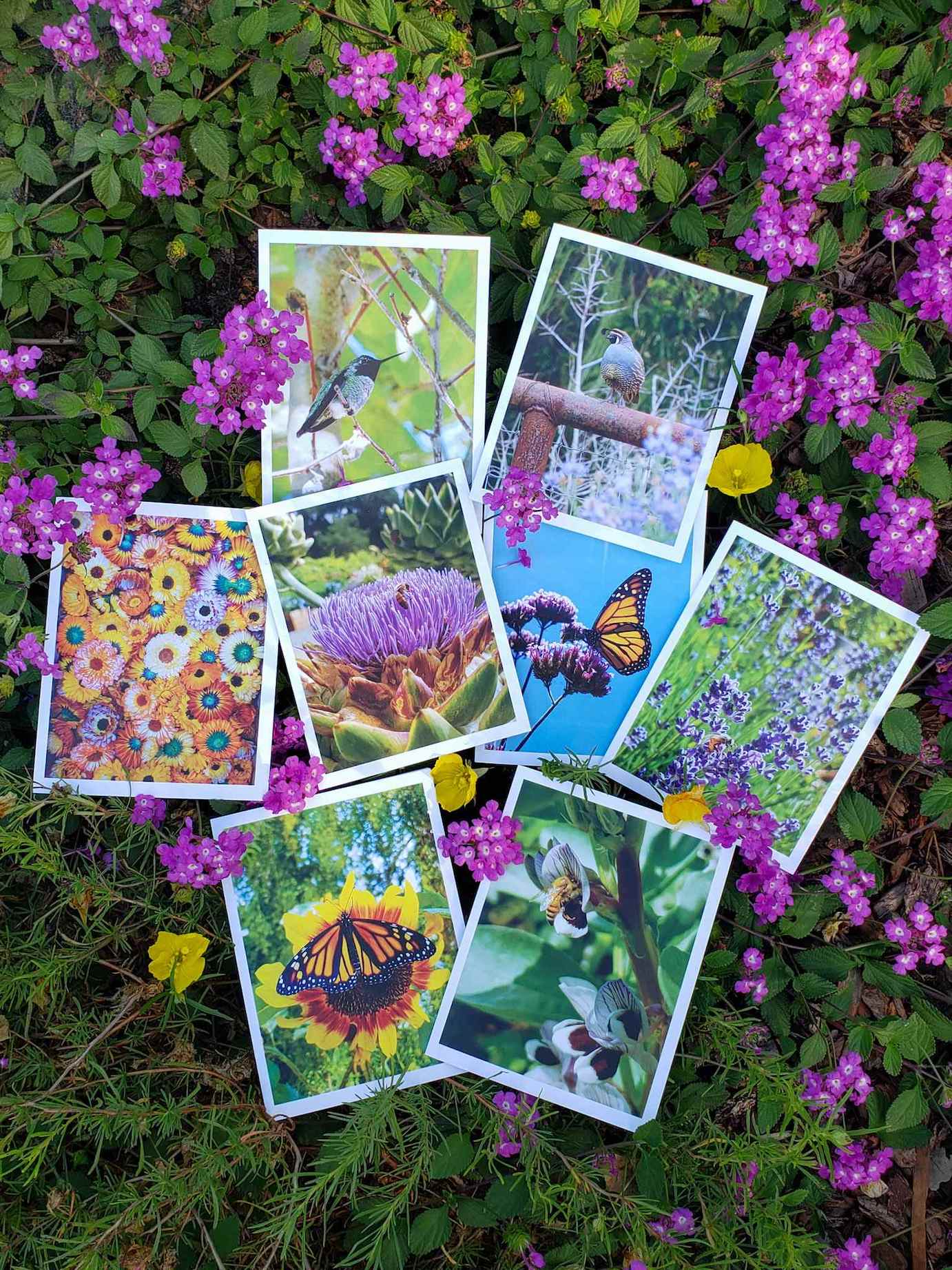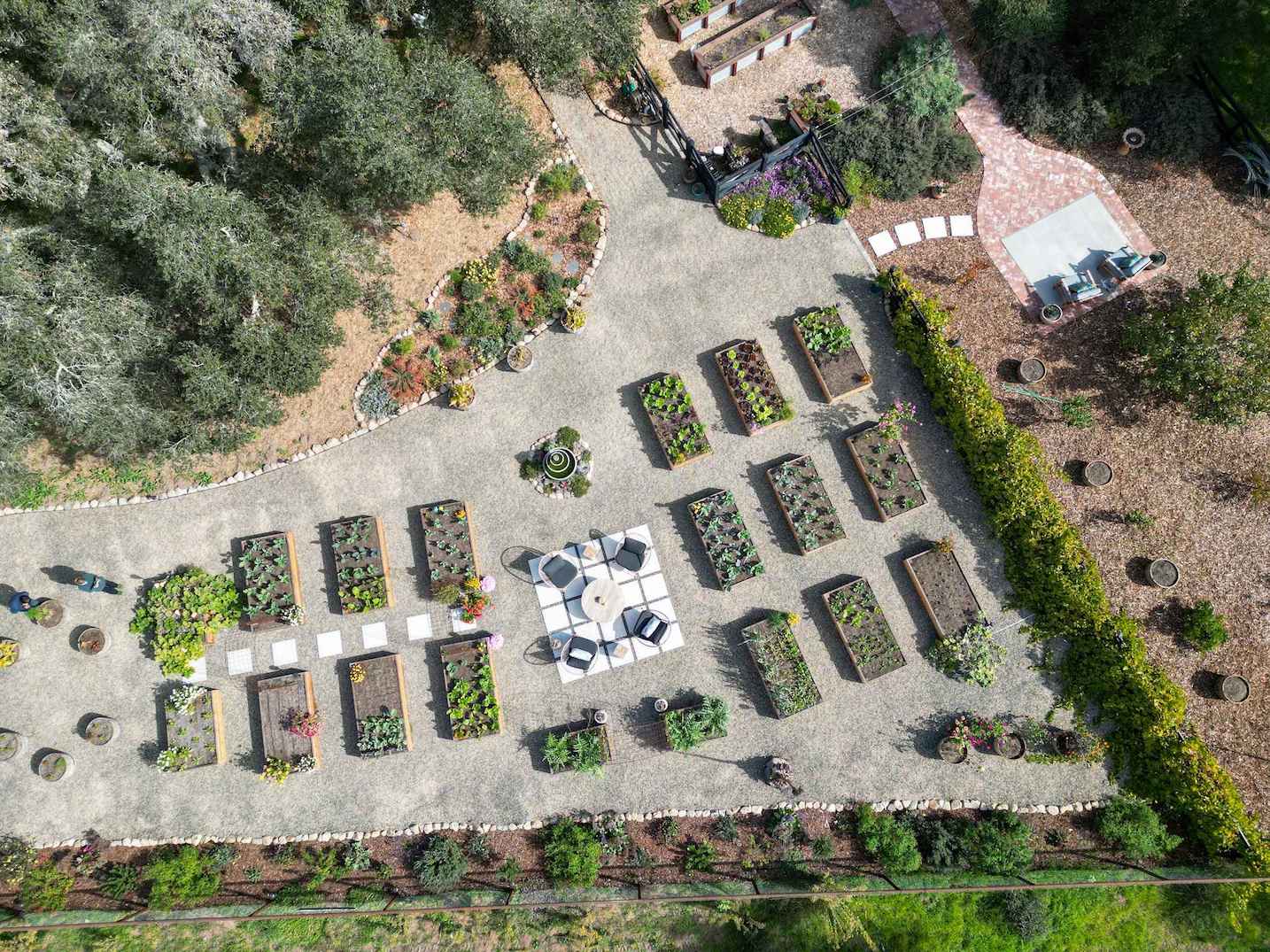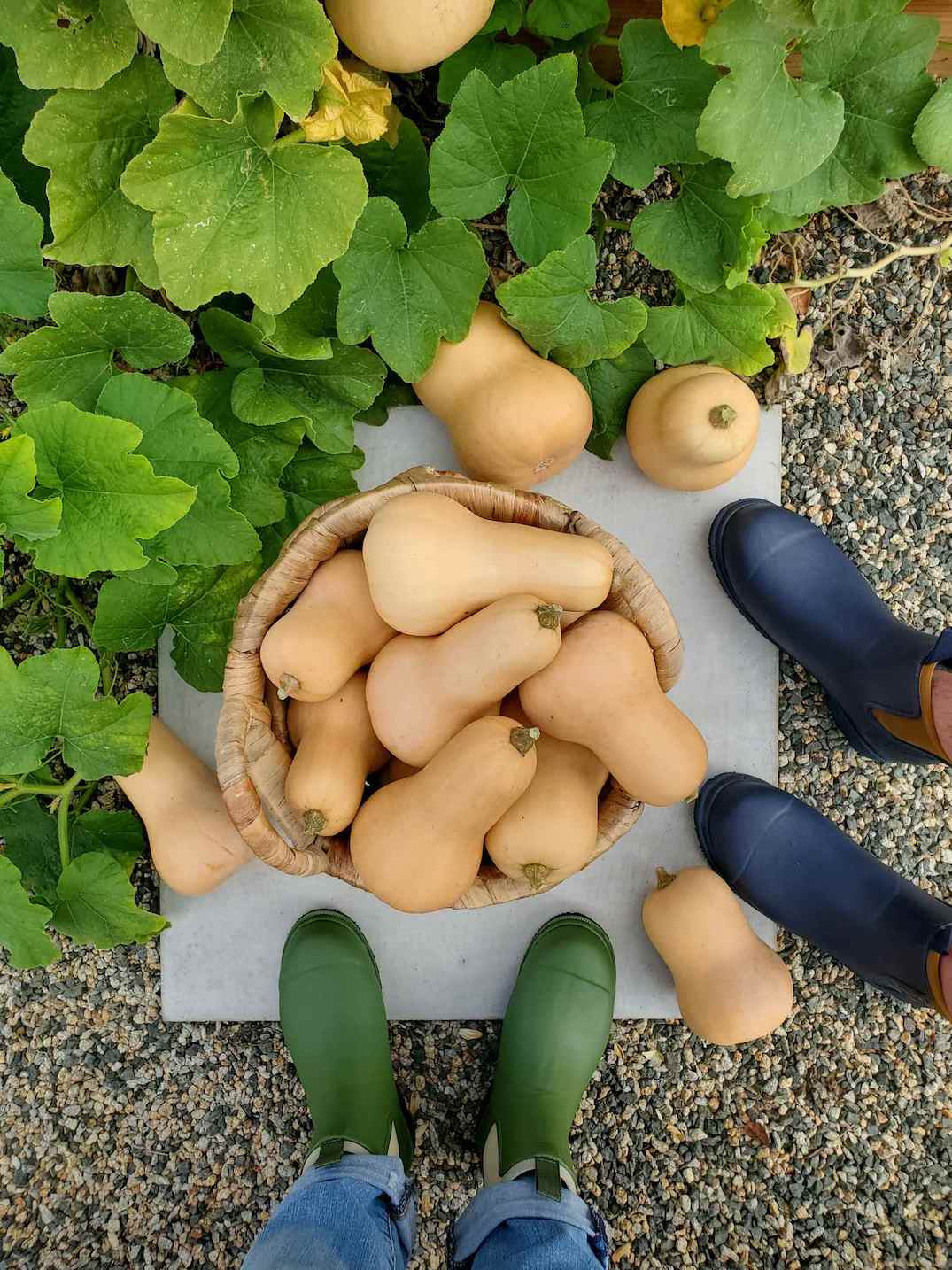
Homestead Update: Fall Garden Tour ’22 (Video and Photos)
Hey friends, happy fall! It’s been a few months since our last garden tour and update, so I figured it’s about time we catch up. We had a fantastic finish to summer, harvested and preserved sooo much food, and are now enjoying our first fall season in our new garden space! I hope you all had a wonderful summer too.
This post will serve as a nice little recap and photo dump, including some fun drone shots and updated before-and-after photos. (I can’t believe it’s been exactly one year since we started creating the new garden space!) I filmed a new fall garden tour video to share with you too. I’ll also briefly talk about how we transition our garden from summer to fall crops, since that is something that folks ask about quite often.
Gardening aside, we have had a few fun developments on the business side of Homestead and Chill. In addition to the organic sourdough starter, handmade salves, lip balms, bath salts, and other goodies we always offer in our shop, we just recently released pollinator-themed recycled greeting cards with some of my favorite photos. I had so much fun creating them to share with you, and hope you love them too!

Fall Garden Tour Video



Wrapping Up Summer
This summer, our most prolific crops were tomatoes, eggplant (sooo many eggplant!), cucumber, basil, onions, peas, and squash. We had so much to enjoy and preserve! For whatever reason, our beans and peppers just did so-so this year. In the orchard, the mature apricot tree and grape vine blessed us with loads of fresh fruit. We also had a great harvest of homegrown potatoes, and quite a few nice melons!












Transition to Fall
The swap from summer crops to fall is always a bit of coordinated dance – but after many years, we’ve found our groove! Here in zone 9, we start our fall seedlings in the grow room in late August, transplant them out in the first week of October, and amend the garden beds with fresh compost, mulch and slow release organic fertilizer in between. Use your Homestead and Chill planting calendars to figure out the best timing for your zone.
Admittedly, it does require us to remove some of the summer crops that are still producing in order to get the fall crops planted on time. For instance, the tomatoes were still pumping out fruit when we cut them out in early October – but we’d already had PLENTY to eat and preserve by then. To us, it’s worth sacrificing the tail end of the summer season to give the fall garden a strong start. If we wait too late to plant fall seedlings, they easily get stunted by the colder and shorter days of late fall.




The Fall Garden












Before-and-After Photos: October 2021 vs October 2022
I love fall gardening in general, but this year is extra special – it’s the first fall garden in our new space! I can’t believe it’s been a year since we first “broke ground” out here. In October 2021, we were just starting to level and define the new garden area with borders. In November, we added the ground cover and gravel. We built and sealed the raised beds in December/January, and got them in place, filled and drip irrigation installed by February of this year. For more details, I shared the whole build-out process in these posts: Starting the New Garden and the New Garden Final Reveal.




And that’s what is going on in the fall garden right now! I can’t wait to see how the beds continue to fill in as the plants mature over the next couple of months. I will definitely do another tour video and update then – once the cabbages, cauliflower, and broccoli are all heading up! Thank you so much for exploring the garden with me today. Please let me know if you have any questions, or just say hello in the comments below!








12 Comments
Jennifo
LOVE opening your emails! You both are so inspriring. I made 🙂 my husband watch this video since I’ve talked about you & your homesteads so often. He was so impressed. Do you keep all of your harvestings? There is so much I can’t imagine you are able to eat all your greens before they are spoiled. Your smoothies must be aMAYzing!
Thank you for all you do. It is truly a blessing to watch the hard work through your postings. I’m living through you both! 🙂
Aaron (Mr. DeannaCat)
Hi Jennifo, thank you so much for your support! We eat a lot of vegetables for sure, we typically don’t have a problem keeping up with our leafy green harvests and quite a few of these beds contain cauliflower, broccoli, and brussels sprouts so we aren’t harvesting anything out of those beds just yet. During the summer we did have a surplus of eggplant, cucumbers, and tomatoes but we preserve a lot of our produce as well as give some away to neighbors and local food banks. We have an article about preserving your harvest that we go into further detail if you want to check it out here. Thank you for the kind words and for following along with us!
Shawna Knutson
Your garden is my dream!!! Can you share a link for the arched trellises?
Aaron (Mr. DeannaCat)
Hi Shawna, thank you so much! The arched trellises we got at our local Ace Hardware store who have a fairly extensive outdoor/nursery section.
Anna
AMAZINGGG!!! SO inspiring! SO much work! The before and afters are incredible!!! Love the Badger and Bear cameos too! Love to you guys and all the joy and beauty you spread and share!!!
Aaron (Mr. DeannaCat)
Thank you so much Anna, we appreciate your support!
Stumpy
Hard work pays off, well done you two. It’s been so fun following along.
PS- That beautiful photo of little the John bottle brush finally convinced me to get one!
Aaron (Mr. DeannaCat)
Thanks so much Stumpy! We definitely like the Little John bottle brush, they are just a slow grower and will take some time to fill in.
brian southworth
you should try growing wine cap mushrooms if your not doing so. now
love your garden
Aaron (Mr. DeannaCat)
Hi Brian, we have thought about growing mushrooms and may give them a try in time. Thanks for the suggestion!
Patricia
Hi Deanna and Aaron – absolutely LOVE how your Homestead has progressed.
Two things:
1) I have learned SOOOO much from you guys and I really appreciate your expertise and experience. I am caring for my very first fall raised-bed garden (beans, peas, radishes, carrots, onions, various choys and lettuces, beets, rapini, nero cabbage, brussels sprouts, garlic & saffron crocus!) and the garden is THRIVING!!! You inspire me to try new planting — everything!
2) Question about your native plants and native soil. I am just up the 101 from you in the Corral de Tierra area of Monterey County so I really appreciate that we are both in Zone 9 (b for me). I love how you have designed your native pollinator gardens – they have a really cool natural vibe. Did you till, amend or sheet mulch your native soil?
I am experimenting with wine barrel “lasagna style” soil (native soil with compost and mycorrhizal amendments) with native plants (the narrowleaf milkweed is REALLY happy!) and also sheet mulching over my native decomposed granite (grrrrr). I have yarrow, gumplant, CA fuchsia, narrowleaf milkweed and more! seeds/corms/etc to sow and plant.
Thank you so much for your inspiration!
Aaron (Mr. DeannaCat)
Hi Patricia, thanks you so much for the kind words and that is so exciting that you are venturing into fall/winter gardening! So glad to hear that you are experimenting with new varieties and it looks like you will have quite the variety. As far as our native soil goes, for our pollinator area that isn’t along the fence line, we covered the top of the soil with a couple inches of barky compost and amend each planting hole with potting soil or compost (after our planting was finished we topped the area with a couple inches of bark mulch). For our planting areas along the fence line, we just amended each hole as we went with a combination of potting soil and compost, giving special attention to any planting holes for fruit trees. We then covered the planting area in bark mulch. So in all, for pollinator plants we don’t amend the planting holes much, but definitely do so on any of the planting holes designated for food (artichokes) or fruit/herb trees/shrubs. Hope that helps and keep us posted on your fall/winter garden, have fun growing!